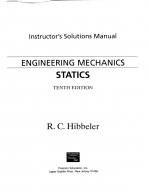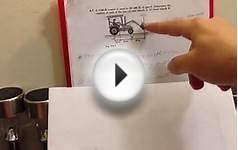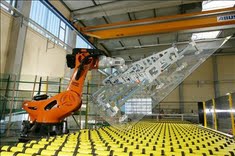Animations. Key principles and concepts are animated to help students visualize the forces at play, breaking down for them the complicated sequences, thereby building their understanding. These animations lend the necessary graphic component that instructors can use in their lectures and tutorials.
• Enable students to ‘see’ the forces at work, in a step-by-step manner, and how these forces apply in the related mathematical equations. • An effective tool for instructors to use in tutorials or lectures to explain difficult-to-understand concepts, saving them time.
It is available on the companion website Problem Solving
R.C. Hibbeler’s text features a large variety of problems from a broad range of engineering disciplines. The problems stress on practical and realistic situations encountered in professional practice and are of varying levels of difficulty.
Fundamental Problems. These problem-sets follow the example problems. They offer students simple applications of the concepts and, therefore, provide them with the chance to develop their problem-solving skills before attempting to solve any of the standard problems that follow. You may consider these problems as extended examples since they all have partial solutions and answers that are given in the back of the book.Conceptual Problems. Throughout the text, usually at the end of each chapter, there is a set of problems that involve conceptual situations related to theapplication of the mechanics principles contained in the chapter. These analysis and design problems are intended to engage the students in thinking through a real-life situation as depicted in a photo.











 Manufacturing engineering is a discipline of engineering dealing with different manufacturing practices and the research and development of processes, machines, tools and equipment. Dealing with machines that turns raw materials to a new product.
Manufacturing engineering is a discipline of engineering dealing with different manufacturing practices and the research and development of processes, machines, tools and equipment. Dealing with machines that turns raw materials to a new product.